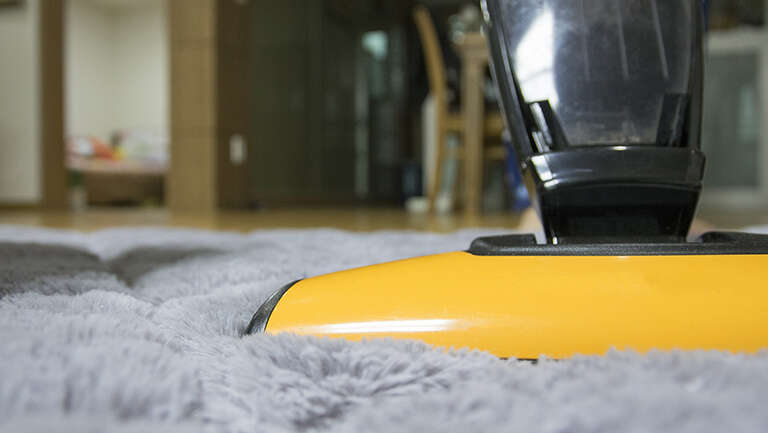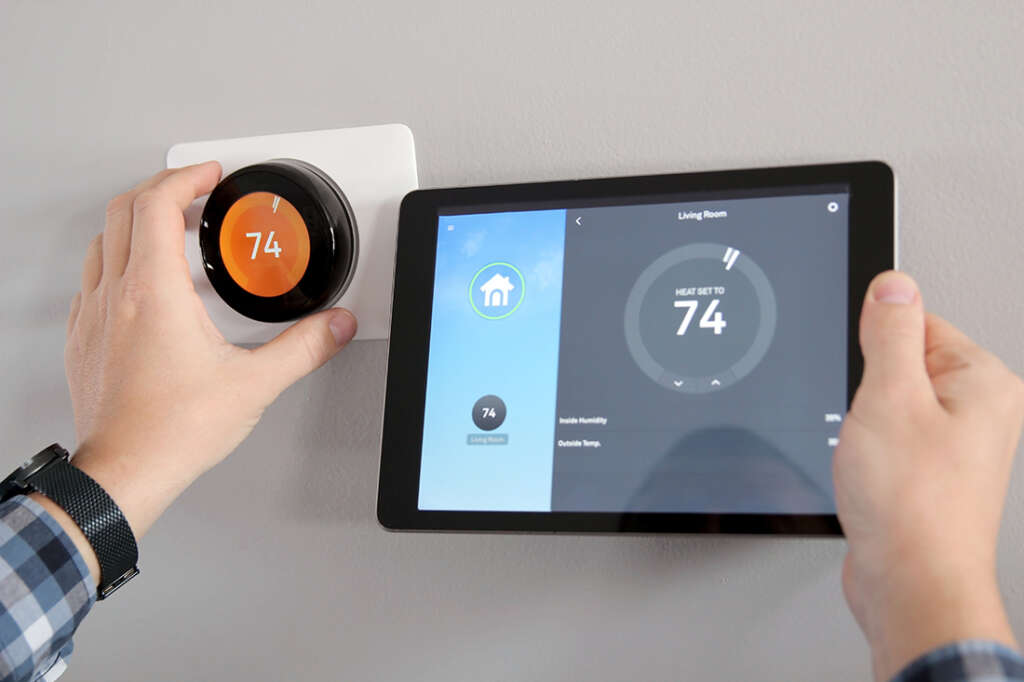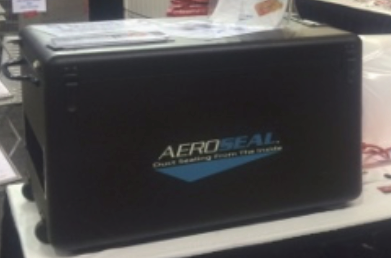13 WAYS TO RELIEVE ASTHMA WITH YOUR HOME HVAC

With the arrival of spring and summer, happiness and bliss fill the air. As we start to see flowers bloom, the trees become green, and the weather grow warmer, we’ll also see the return of some things not so welcome: allergies and asthma triggers. Asthma, in particular, can flare up with additional triggers during these times. Thankfully, there are plenty of ways to make asthma a thing of the past, and we’ll show you how to reduce these triggers with the help of your HVAC system and make home life more comfortable for asthma sufferers.
What Is Asthma?
Asthma is a long-term illness that is common in children, but adults can have it, too. It causes the sides of the airways in the lungs to swell and shrink those airways, making it difficult to breathe. An asthma attack is generally characterized by wheezing, coughing, tightness of the chest, and overall trouble breathing. The mucus produced by your body can make it even worse. If you’ve never had or witnessed an asthma attack, it can be pretty alarming.
Asthma attacks are caused by exposure to asthma triggers. Things that trigger one person’s symptoms may be completely different than what affects someone else. Common triggers include tobacco smoke, dust, and dust mites, outdoor air pollutants like pollen or other common allergens, pet hair or dander, mold, wood smoke, infections, and other airborne contaminants. While treatments are available, the best way to avoid asthma attacks is to understand and avoid your triggers. But how exactly do you do that?

What Can You Do?
Here are ten ideas to help you better manage these triggers at home and suggestions for modifications to your home HVAC system that can help relieve and reduce the symptoms of seasonal allergies and asthma.
The Easy Stuff
Some ways to control allergies and asthma are no-brainers, like:
- Keep your doors and windows closed
- Dust and vacuum frequently, using a vacuum with a HEPA filter
- Change your home’s air filter regularly
- Keep your home HVAC systems in optimum shape by having regular maintenance performed.

More Complex Solutions
There are additional things you can do to prevent airborne contaminants from getting into and spreading around your home:
Use a higher-quality air filter in your home HVAC system.
Filters are rated on their effectiveness using a MERV, or minimum efficiency recording value, rating. High-quality filters will range between 14-16, but HEPA filters will have a rating of 17 or higher. This means they catch the most particles and prevent them from entering your home’s airflow. Be careful, though, as most home systems are not equipped to handle a HEPA filter unless they’ve been upgraded. A home heating expert like All American Heating can advise you on the right air filter to use at high altitudes. We also offer permanent, high-performance air filters for the best in clean air.

Buy a home air purifier to pick up where your HVAC system leaves off.
Room air purifiers can be found at any home improvement or department store. These systems are an excellent complement to the purification efforts of your air conditioning system. Additionally, an HVAC professional can add whole-home air purifiers with HEPA filters to your home HVAC system. These will help trap the most particles and remove them from the air in your home, letting you and your family breathe easier.

Control your home’s humidity levels.
Humidity is a very common asthma trigger and can make it even more difficult to breathe. It can also promote the growth of mold, mildew, and other airborne contaminants that can trigger allergies and asthma symptoms. Again, small dehumidifiers can be purchased for areas like basements or rooms that are commonly damp. Or, you can have an HVAC expert add a whole-home humidifier to your HVAC system. This is the best approach to maintaining the proper humidity levels throughout your home.

Use technology to clean up your home’s duct systems.
Dust and other contaminants like pet dander, mildew, and other particles can thrive in your home’s ductwork and contribute to breathing problems. There are several ways to improve and maintain the state of your home’s ducts and provide healthier air at home:

Have your ducts professionally cleaned on a regular basis.
A professional duct cleaning is the first step in improving the quality of the air flowing through your home. This process will clear out the dust, allergens and other airborne contaminants that enter your home’s airflow, delivering cleaner air to your home and its inhabitants.
Duct sanitizing is an extra step designed to kill any airborne pathogens or bacteria that are residing in your ductwork and making their way into the air throughout your home. Once the ducts are sanitized, your home’s air will be cleaner and healthier.
Duct sealing with a system like Aeroseal can help eliminate duct leaks by which these particles are entering your home’s airflow, like broken seals or cracks in your duct system. Aeroseal sprays an aerosol sealant into your ductwork, which is carried throughout and which gathers at the edges of cracks or holes and fills them in, sealing the leaks. This closes your ductwork off from contaminants, maintaining clean airflow and delivering the highest quality air to you and your family.
Ultra-violet germicidal light fixtures are designed to kill bacteria and other particles in your ductwork on a continual basis. Mounted in your ductwork, these fixtures shine ultra-violet rays at various points in your system, so all the air is exposed, and the contaminants it contains are killed as the air flows by. Like duct sanitization, UV light fixtures provide cleaner air to your home and family, but instead of just once a year or so, these fixtures clean your air constantly.

A Few More Tips That Can Make a Difference
For some folks, the tips above tips will be a game-changer and more than enough to remedy your problems. But even if they don’t completely solve your problems, or if you want to take things a step further, we’ve got some more insight for homeowners. These additional strategies can really boost your home’s asthma-friendliness.
Use a programmable or smart thermostat.
A programmable or smart thermostat can play a huge role in managing asthma symptoms. These devices allow you to maintain a consistent temperature and humidity level in your home, which is a big deal for asthma sufferers. Extreme temperatures and weather conditions, whether hot or cold, can trigger an asthma attack, and summer and spring are notoriously known for fluctuating weather and temps. Smart thermostats also provide the convenience of remote control, so you can adjust settings even when you’re not at home, helping you always keep complete control of your home air quality.
Improve the ventilation in your home.
Poor ventilation can trap allergens like pollen, mold spores, and dust inside your home. To combat this, consider installing exhaust fans in humid areas like bathrooms and kitchens. These fans help expel excess moisture and prevent the growth of mold, which can trigger asthma symptoms. Additionally, make it a habit to open windows and doors when the weather permits, allowing fresh air to circulate and dilute indoor pollutants. An efficiently ventilated home will make sure that the air conditioning and asthma relationship remains positive, helping you manage asthma symptoms effectively.
Upgrade your HVAC system.
An outdated HVAC system may not be doing any favors for your asthma. Upgrading to a newer, more efficient model can significantly improve air quality in your home. Modern HVAC systems come with advanced filtration options that can capture even the smallest particles, including pollen and mold spores. Some systems also offer much better humidity control and, overall, just more powerful cooling to handle the warm weather. This can both save you money AND keep many more triggers away from the confines of your home.
Seal your home.
It’s not enough to just keep your windows and doors closed and hope for the best. Air can leak into your home through gaps and cracks, bringing allergens and other asthma triggers with it. Sealing your home can reduce the chances of triggering an asthma attack. Start by checking for drafts around windows and doors. Use weather stripping or caulk to seal these areas. Don’t forget to inspect other potential entry points, like attics and basements. And when in doubt, look to a professional.



Get More Asthma Relief Tips With All American Heating
Contact All American Heating today to have a home indoor air quality audit, and we’ll provide you with a full Indoor Air Quality Plan to deliver the cleanest and healthiest air inside your home.
